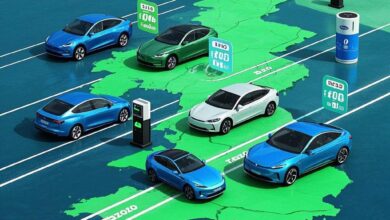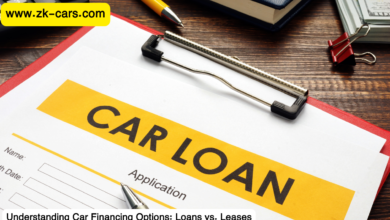Best times to buy a car

Purchasing a new or used car can be a significant financial decision, and timing plays a critical role in securing the best deal. The price you pay can vary depending on the time of year, the dealer’s sales goals, and market trends. Understanding when to shop for a car can help you save thousands of dollars, whether you’re eyeing a brand-new model or a used vehicle.
In this article, we’ll cover the best times of the year to buy a car, breaking down specific periods where you’re likely to find the biggest discounts and incentives.
1. End of the Month
Dealers often have sales targets to meet by the end of each month. These targets are linked to bonuses and incentives from manufacturers, making the last few days of the month a great time for customers to find discounts. Salespeople are motivated to meet their quotas, and that means they may be more willing to negotiate prices or offer special deals to close a sale.
- Why it’s a good time: Dealers are motivated to sell to meet monthly sales targets.
- Potential savings: You might negotiate a better price or secure bonuses like free maintenance or extended warranties.
Pros:
- Increased flexibility in pricing
- More room for negotiating
Cons:
- Limited stock, especially if it’s the end of the month and popular models have already sold out
2. End of the Quarter
In addition to monthly targets, dealerships also have quarterly goals. The end of each quarter—March, June, September, and December—is another key time when dealerships will push hard to meet their sales quotas. This creates opportunities for buyers to score significant discounts, especially on models that haven’t been selling well throughout the quarter.
- Why it’s a good time: Sales quotas for the quarter make dealers eager to close deals quickly.
- Potential savings: Offers may include price reductions, cashback offers, or financing deals.
Pros:
- Greater pressure on dealers to hit sales goals
- High likelihood of securing favorable financing rates
Cons:
- Limited to specific models or trims based on what hasn’t sold well
3. End of the Year (October – December)
The final quarter of the year, particularly October through December, is considered one of the best times to purchase a vehicle. During this period, dealerships are working to clear out old inventory to make room for new models arriving in the new year. This is particularly true for vehicles from the previous model year. To make room for incoming stock, dealers offer deep discounts, attractive financing options, and even extra incentives such as cashback offers.
- Why it’s a good time: Dealerships want to clear out older inventory to make room for new models.
- Potential savings: Discounts can be substantial, particularly on models from the previous year.
Pros:
- Large discounts on outgoing models
- Best financing options of the year
- Potential for holiday promotions (Black Friday, Christmas sales)
Cons:
- Limited stock for certain colors or trims
- You may need to compromise on features if the latest technology isn’t available in the outgoing models
4. Holiday Weekends
Holiday weekends are known for great car deals as dealerships take advantage of the extra foot traffic. Major holidays such as Memorial Day, Fourth of July, Labor Day, and Black Friday see dealerships offering substantial discounts, zero-interest financing, and cashback incentives to attract buyers.
- Why it’s a good time: Holiday sales events typically come with big promotions, plus you may see end-of-season discounts combined with holiday savings.
- Potential savings: Price cuts, cashback deals, and low or zero-interest financing options.
Pros:
- Large-scale promotions often lead to big discounts
- Incentives like cashback, extended warranties, or zero-percent APR
Cons:
- Dealerships are busier, so the experience may feel rushed
- Competition can be high, limiting available inventory
5. Model Year-End Clearance (July – October)
Car manufacturers typically release new models in the late summer or early fall, meaning that dealerships need to clear out the previous year’s models starting around July through October. If you don’t mind purchasing a model from the previous year (which usually comes with all the same features as the latest version), this period is a prime opportunity to score an excellent deal.
- Why it’s a good time: Dealers need to make room for new models arriving in the fall, which means great deals on outgoing models.
- Potential savings: Significant markdowns on previous-year models, especially if they’re still on the lot come October.
Pros:
- Hefty discounts on older models
- Options to negotiate better prices with fewer buyers in the market
Cons:
- Newer models may come with updated technology or features that aren’t available in the older versions
- Limited selection of trims and colors
6. New Model Release Time (Late Summer – Fall)
If you’re not concerned with purchasing the latest model but still want a newer car, wait until new models are released in the late summer or early fall. At this time, dealerships are more willing to negotiate on older inventory that remains unsold. This is especially true for cars that haven’t been selling well or those where new features in the latest models have made last year’s versions less attractive.
- Why it’s a good time: The arrival of new models pushes prices down on existing stock, particularly for cars that are still sitting on the lot.
- Potential savings: Discounts on models from the previous year, especially for less popular trims.
Pros:
- Good time to buy a relatively new car without paying a premium
- Increased incentives to clear older models
Cons:
- You may miss out on the latest features or design changes
- Deals may only be available on specific models or trims
7. Winter Months (January – February)
The start of the year, particularly January and February, can also be an excellent time to buy a car, especially if you missed out on year-end deals. Dealerships are quieter after the holiday season, and many buyers wait for their tax refunds before purchasing, which means less competition for buyers in early winter. Additionally, dealers may still have leftover stock from the previous model year that they’re eager to clear out.
- Why it’s a good time: Dealerships are typically less busy, and there may still be leftover stock from the previous year.
- Potential savings: Discounted prices on older models, low interest rates, and sometimes extended warranties.
Pros:
- Less competition for vehicles
- Some lingering discounts from year-end clearance sales
- More attention from salespeople
Cons:
- Limited selection of vehicles, particularly newer models
- Cold weather may make shopping less appealing in some regions
Common Questions
**1. What time of year offers the best deals on new cars?
The best time to buy a new car is typically during the end of the year (October – December), as dealerships offer significant discounts to clear out older models and meet their sales targets. You can also find good deals during major holiday weekends like Black Friday or Labor Day.
**2. Is it better to buy a car at the beginning or end of the month?
It’s generally better to purchase a car toward the end of the month. Dealerships and salespeople are working to meet monthly quotas, so they may be more willing to offer discounts or additional perks to close a deal.
**3. What is the best time to buy a used car?
Similar to new cars, the end of the year is often the best time to buy a used car. However, deals on used cars can also be found during tax season (February to April), as people often use their tax refunds to purchase vehicles, increasing the availability of trade-ins.
**4. Can I negotiate better deals during a holiday weekend sale?
Yes, during holiday weekends, many dealerships offer promotions like cashback deals, zero-interest financing, or special leasing terms. These events can provide a great opportunity to negotiate a better deal on top of the sales prices.
**5. Are cars cheaper during Black Friday?
Yes, Black Friday is one of the most popular times for dealerships to offer aggressive deals, including discounts, cashback, and low financing options. Many buyers find significant savings during this time.
Conclusion
Timing can be everything when buying a car, and knowing the best times of year to purchase can make a big difference in the price you pay. Whether you’re shopping at the end of the year, taking advantage of holiday sales events, or targeting the end of the month when dealerships are eager to hit sales quotas, being strategic with your timing can save you thousands of dollars.
Ultimately, the key is to combine smart timing with thorough research on the vehicle you want. By aligning the right moment with the right car, you’ll be driving off the lot with both a great vehicle and a great deal.




